 |
JAVA: Layers and Tiers |
| << JAVA: MVC Model 2 Architecture |
| JAVA: Expression Language >> |
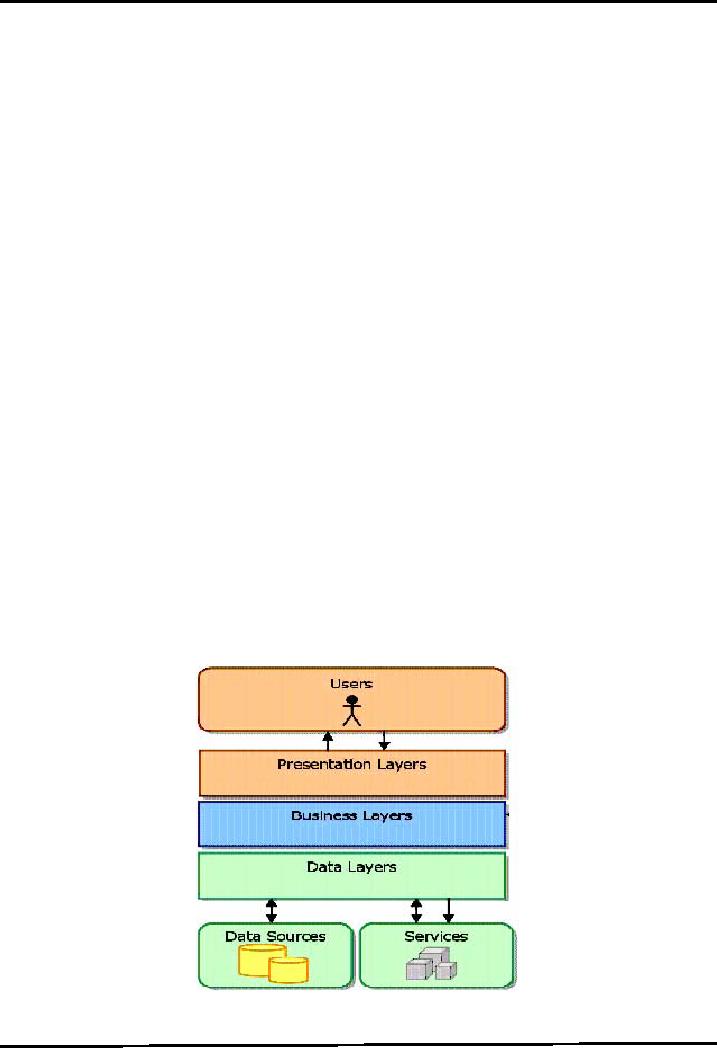
Web
Design & Development CS506
VU
Lesson
41
Layers
and Tiers
How
do you structure an application to support
such operational requirements as
maintainability,
reusability,
scalability and robustness? The
answer lies in using Layers
and Tiers? What different
technologies
Java provides to support layered or
tiered architectures. The answer to
these questions will
remain
our focus in this handout. A
small case study will
also be used to comprehend the concept of
layers.
Layers
vs. Tiers
Layers
are merely logical grouping
of the software components that
make up the application or
service,
whereas
Tiers refer to the physical
residence of those layers.
In
general,
. Layers
represents the logical view of
application
. Tiers
represents physical view of
application
However,
both terms are used
intractably very often. You
must be confused what does
logical & physical
view
mean? Let's elaborate layers and tiers
further in detail to differentiate
between them.
Layers
The
partitioning of a system into layers
such that each layer
performs a specific type of functionality
and
communicates
with the layer that adjoin
it.
The
separation of concerns minimizes the
impact of adding services/features to an
application. The
application
developed in layers also enables
tiered distribution (discussed
later). Furthermore
easier
maintenance,
reuse of code, high cohesion & loose
coupling sort of additional benefits
are also enjoyed by
the
use of tiered architecture.
To
begin with, layered architecture
based on three layers. These
are
Presentation
Layer
Business
Layer
Data
Layer
Note:
However,
there is no upper limit of number of layers an
application can have. Each
layer can also be
further
break
down into several layers
depending upon the requirement and
size of the application.
The
figure given below shows a
simplified view of an application and
its layers.
As
you can see in the figure,
users can only interact
with the presentation layer. The
presentation layer
passes
the user request to the business
layer, which further passes
the request to the data layer.
The data
320
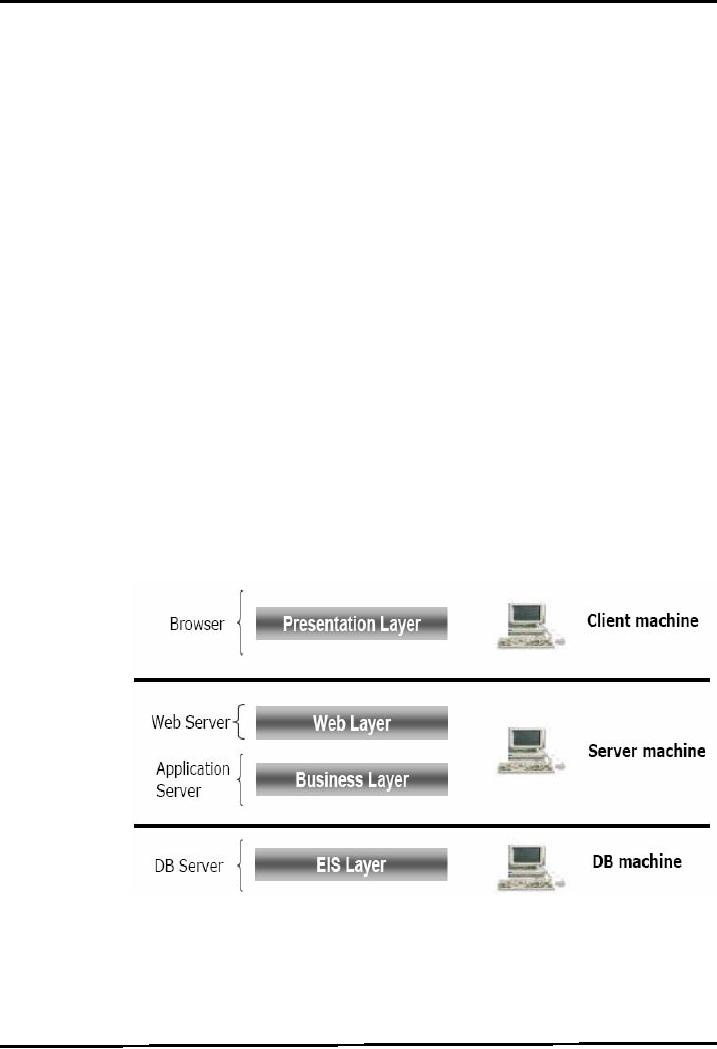
Web
Design & Development CS506
VU
layer
communicates with the data
sources (like Database etc.) or
other external services in
order to
accomplish the
user request.
Let's
discuss each layer's
responsibility in detail:
Presentation
Layer
It
provides a user interface to the
client/user to interact with the
application. This is the only
part of the
application
visible to client.
Its
job list includes collecting
user's input, validating
user's input (on client
side using JavaScript
like
technologies
OR on server side), presenting the results of the
request made by the user and
controlling the
screen
flow (which page/view will
be visible to the user).
Business
Layer
Also
called application layer, it is
only concerned with the
application specific functionality. It is
used to
implement
business rules and to perform business
tasks.
For
example, in a banking system,
this layer will provide the
functionality of banking functions
such as
opening
an account, transferring of balance from
one account to another,
Calculation
of taxes etc.
Data
Layer
It is
concerned with the management of the
data & data sources of the
system. Data sources can
be
database,
XML, web services, flat file
etc. Encapsulates data
retrieval & storage logic
For example, the
address
book application needs to
retrieve all person records
from a database to display them to the
user.
Tiers
As
mentioned, layers help in building a
tiered architecture. Like layers, there
is no restriction on using
number of
tiers. An application can be
based on Single-tier, Two-tier,
Three-tier or N-Tier
(application
which
have more than three tiers). The choice
of using a tiered architecture is
contingent to the business
requirements and
the size of the application
etc.
Tiers
are physically separated
from each other. Layers
are spread across tiers to
build up an application.
Two
or more layers can reside on one tier.
The following figure
presents a three-tier architectural
view of
an
application.
The
client tier
represents
the
client
machine
where
actually
web
browser is
running
and
usually
displays
HTML.
You can
think
of a
Presentation
as
of
two parts; one
is on
client side,
for
example,
HTML.
There is
also
a
presentation
layer
that is used to generate the
client presentation often called
server
presentation.
We'll discuss about
it
later.
The
server machine can consist on a
single server machine or more. Therefore,
it is possible web
server is
running
on one server machine while
application
server on another. Web
server is used to execute
web
pages
like JSPs whereas
application server is used to
run special business objects like
Enterprise
JavaBeans
(discussed
later). The web
layer and
applications
server can
be on two separate machines
or
they
can be on same tier as shown in the
diagram
321
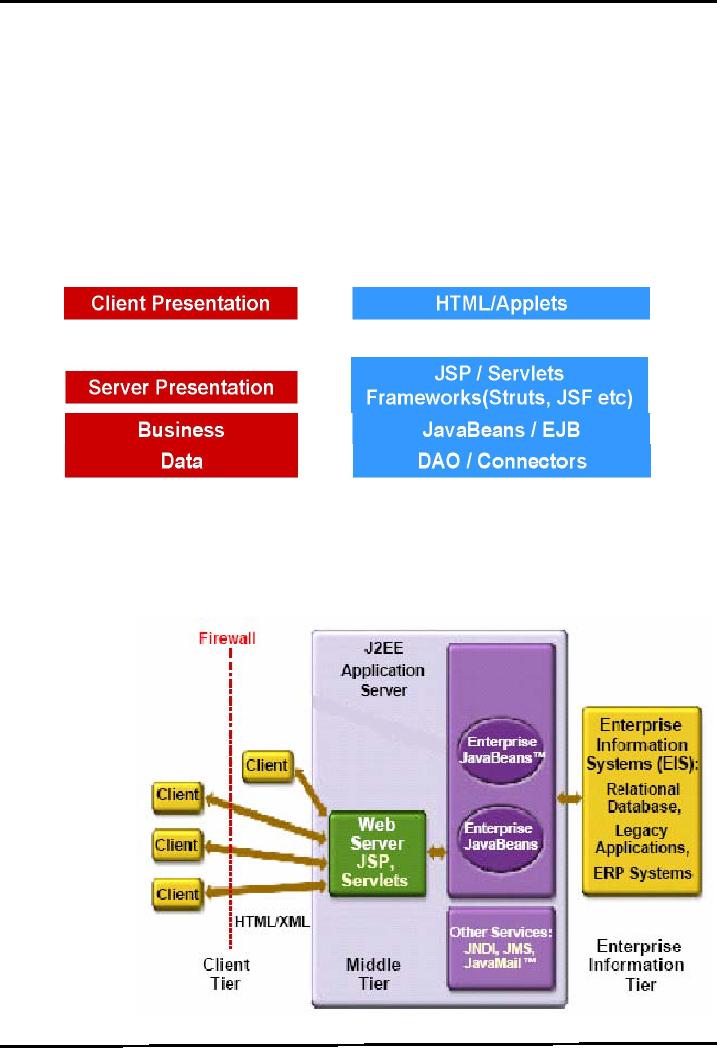
Web
Design & Development CS506
VU
The
client tier represents the
client mThe database server
is often running on a separate
tier, i.e. DB
machine
often called Enterprise information
tier.
Layers
Support in Java
The
secret of wide spread use of
Java lies in providing
specific technology for each
layer. This not
only
eases
the development by freeing the programmer
for caring operational
features but only reduces
the
production
time of the software.
In the
following figure, Presentation is
bifurcated into two layers.
These are Client Presentation
layer and
Server
Presentation Layer. What client
sees in a browser forms client
presentation layer while
server
presentation
layer includes the Java
technology components?
(JSP
and Servlets etc.) that are
used to generate the client
presentation.
Layers
Java/J2EE
Technology
On
business layer, JavaBeans (also
referred as Plain
322
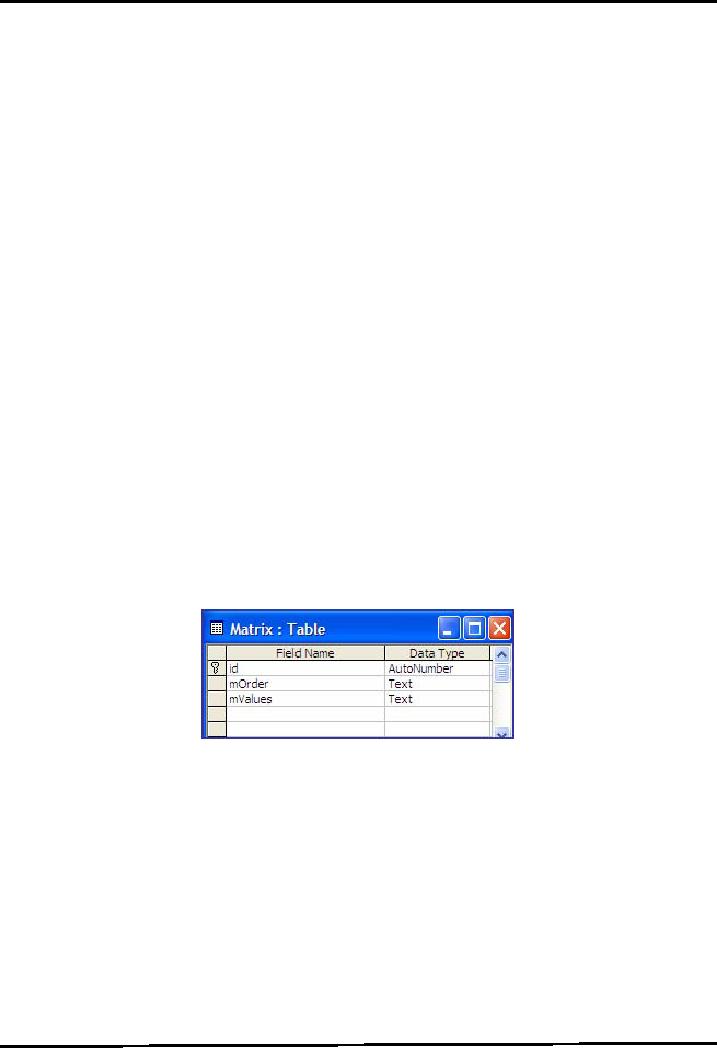
Web
Design & Development CS506
VU
Suppose,
our client is HTML based.
Client does some processing
on HTML and transports it to web server.
JSP
and Servlets are possible technologies
that can be used in a web
server. However, there are
some
Frameworks
such as JSF etc that
can be used in a web server.
The classes which form the
presentation layer
reside
on web server and of course
controllers are also used
over here.
If
web server, wants to perform
some business process, it
usually gets help from
some business layer
components.
The business layer component
can be a simple JavaBean
(POJO) but in a typical
J2EE
architecture,
EJBs are used. Enterprise
JavaBeans interacts with the database or
information system to
store
and
retrieve data.
EJBs
and JSP/Servlets works in two
different servers. As you
already know, JSP and Servlets
runs in a web
server
where as EJBs requires an application server.
But, generally application
server contains the web
server
as well.
Application
server including web server
generally resides on a single
tier (machine), which is often
called
middle
tier. This tier stores
and retrieves data from the
Enterprise Information Tier
(EIS) which is a
separate
tier. The response sends
back to the client by the middle tier
can be HTML, XML etc.
This
response
can be seen on the separate
tier know as client
tier.
Case
Study: Matrix Multiplication
using Layers
Problem
Statement
.
Calculate product of two
matrices of order 2 * 2
. Result of
multiplication should be stored in DB as
well as shown to the user.
Format
. Input
format
-input
will be in 4,2,6,5 format
separated by commas where 4,2
represents entries of the first
row
. Display
format
-Displays
the matrix as a square
. Storage
format for DB
-Matrix
will be stored as a string in the
database along with the
order of the matrix
-The
following figure shows the
table design that will be
used to store the
results.
Layer
by Layer View
A
picture's worth than thousand words.
Therefore, before jumping on to
code, let's put a glance
over layers
that
will be used in this small
case study. The classes
that will be used on each
layer and what
functionality
each
class will perform will
also be discussed.
First,
look on the following picture
that will describe the whole
story.
323
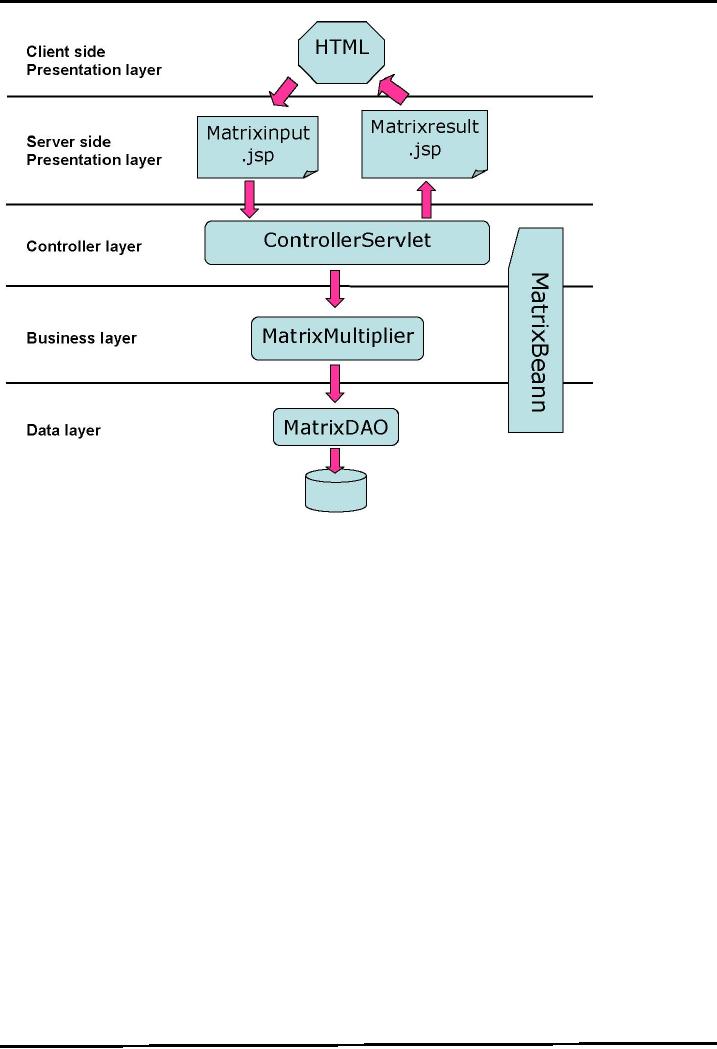
Web
Design & Development CS506
VU
324

Web
Design & Development CS506
VU
matrix = new
int[2][2];
matrix[0][0] =
0;
matrix[0][1]
= 0;
matrix[1][0]
= 0;
matrix[1][1]
= 0;
}
//
setter that takes 4 int
values and assigns these to
array
public
void setMatrix(int
w, int x, int y, int
z)
{
matrix[0][0]
= w;
matrix[0][1]
= x;
matrix[1][0]
= y;
matrix[1][1]
= z;
}
//
getter returning a 2D
array
public
int[ ][ ] getMatrix()
{
return
matrix;
}
// used to
convert 2D array into
string
public
String toString(){
return matrix[0][0] + ","
+
matrix[0][1]
+ "," +
matrix[1][0]
+ "," +matrix[1][1] ; }
} // end
MatrixBean
matrixinput.jsp
This
JSP is used to collect the
input for two matrices in
the form of string such as
2,3,5,8. The data will
be
submitted
to ControllerServlet from this
page.
<html>
<body>
<h2>
Enter
Two Matrices of order 2 * 2 to compute
Product
</h2>
<h3>
<%--
"controller"
is an alias/URL pattern of
ControllerServlet -%>
<form
name="matrixInput" action="controller"
>
First
Matrix:
<input
type="text" name = "firstMatrix" />
E.g.
2,3,4,1
<br/>
Second
Matrix:
<input
type="text" name = "secondMatrix"
/>
<br/>
<input
type = "submit" value = "Calculate
Product" />
</form>
</h3>
325

Web
Design & Development CS506
VU
</body>
</html>
ControllerServlet
This
servlet acting as a controller
receives the input from
matrixinput.jsp. Furthermore, it will
interact with
the
business layer class
MatrixMultiplier to convert the string
into a MatrixBean object, and to
multiply two
matrices.
package
controller;
import
bl.*;
import
bo.* ;
import
java.io.*;
import
java.net.*;
import
javax.servlet.*;
import
javax.servlet.http.*;
public
class ControllerServlet
extends
HttpServlet {
//
This method only calls
processRequest()
protected
void doGet(HttpServletRequest
request,
HttpServletResponse
response) throws
ServletException,
IOException {
processRequest(request,
response);
}
//
This method only calls
processRequest()
protected
void doPost(HttpServletRequest
request,
HttpServletResponse
response) throws
ServletException,
IOException {
processRequest(request,
response);
}
protected
void processRequest(HttpServletRequest
request,
HttpServletResponse
response) throws
ServletException,
IOException {
//
retrieving values from input
fields of matrixinput.jsp
String
sMatrix1 =
req.getParameter("firstMatrix");
String
sMatrix2 =
req.getParameter("secondMatrix");
//
Creating MatrixMultipler
object
MatrixMultiplier
mm = new MatrixMultiplier();
//
Passing Strings to convertToObject()
method of MatrixMultiplier
//
convertToObject() is used to
convert
strings into MatrixBean
MatrixBean
fMatrix = mm.convertToObject(sMatrix1);
326

Web
Design & Development CS506
VU
MatrixBean
sMatrix = mm.convertToObject(sMatrix2);
//
passing MatrixBean's objects to
multiply() method of // MatrixMultiplier
and receiving the
product
matrix in the form // of
MatrixBean
MatrixBean
rMatrix = mm.multiply(fMatrix,
sMatrix);
//
saving results in
database
mm.saveResult(rMatrix);
//
storing the product of
matrices into request, so that it can
be
//
retrieved on
matrixresult.jsp
req.setAttribute("product",
rMatrix);
//
forwarding request to
matrixresult.jsp
RequestDispatcher
rd =
req.getRequestDispatcher("matrixresult.jsp");
rd.forward(req,
res);
} //
end processRequest()
} //
end ControllerServlet
MatrixMultiplier
The
business layer class that's
primary job is to calculate product of
tow matrices given in the
form of
MatrixBean.
This class also has a method
convertToObject that takes a
String and returns back a
MatrixBean
object. MatrixMultiplier will
also interact with the data
layer class MatrixDAOto
store results
in the
database.
package
bl;
import
bo.*;
import
dal.*;
public
class MatrixMultiplier
{
//constructor
public
MatrixMultiplier( )
{
}
//
used to convert a String
(like 2,3,4,5) into a
MatrixBean object
public
MatrixBean convertToObject(String
sMatrix){
//splitting
received string into tokens by
passing "," as delimeter
String
tokens[] = sMatrix.split(",");
//creating
MatrixBean object
MatrixBean
matrixBO = new
MatrixBean();
//
converting tokens into integers
int w
= Integer.parseInt(tokens[0]);
int x
= Integer.parseInt(tokens[1]);
int y
= Integer.parseInt(tokens[2]);
int z
= Integer.parseInt(tokens[3]);
//
setting values into MatrixBean
object by calling
setter
matrixBO.setMatrix(w
, x , y, z);
return
matrixBO;
} // end
convertToObject()
//
used to multiply two
matrices , receives two
MatrixBean objects
// and returns the
product in the form of MatrixBean as
well
public
MatrixBean multiply(MatrixBean
fMatrix , MatrixBean
sMatrix){
//
creating MatrixBean object where
product of the matrices will be
tored
MatrixBean
resultMatrix = new
MatrixBean();
327

Web
Design & Development CS506
VU
//
retrieving two dimensional
arrays from MatrixBeans
object to // perform
multipication
int
matrixA[ ][ ] =
fMatrix.getMatrix();
int
matrixB[ ][ ] =
sMatrix.getMatrix();
int
matrixC[ ][ ] =
resultMatrix.getMatrix();
//
code to multiply two
matrices
for
(int i=0; i<2; i++)
{
for
(int j=0; j<2; j++)
{
for
(int k=0; k<2;
k++){
matrixC[i][j]
+= (matrixA[i][k] *
matrixB[k][j]);
}
}
}
//
storing the product from 2d
array to MatrixBean object
by
//
calling setter
resultMatrix.setMatrix(
matrixC[0][0], matrixC[0][1],
matrixC[1][0], matrixC[1][1]
);
return
resultMatrix;
} //
end MatrixMulitplier
} //
end multiply()
//
save results (MatrixBean
containg product of two matrices)
into // database using
DAO
public
void saveResult(
MatrixBean resultMatrix )
{
MatrixDAO
dao = new
MatrixDAO();
dao.saveMatrix(resultMatrix);
}
} //
end MatrixMulitplier
MatrixDAO
As
class name depicts, it is used to
store product results into
database. Let's look on the
code to see how it
is
accomplished.
package
dal;
import
java.util.*; import
java.sql.*;
import
bo.*; public
class MatrixDAO{
private
Connection con;
//
constructor
public
MatrixDAO()
throws ClassNotFoundException ,
SQLException {
establishConnection();
}
// method
used to establish connection with db
private void
establishConnection() throws
ClassNotFoundException
, SQLException {
//
establishing conection
Class.forName("sun.jdbc.odbc.JdbcOdbcDriver");
String
conUrl = "jdbc:odbc:MatrixDSN";
con =
DriverManager.getConnection(conUrl);
}
//
used to store MatrixBean
into database after
converting it to // a String
public
void saveMatrix(MatrixBean
matrix)
try
{
String
sql = "INSERT INTO
Matrix(mOrder, mValues) VALUES
(?,?)";
PreparedStatement
pStmt = con.prepareStatement(sql);
328

Web
Design & Development CS506
VU
//
converting MatrixBean into
String by calling
toString()
String
sMatrix = matrix.toString();
//
setting order of
matrix
pStmt.setString( 1 ,
"2*2" );
//
setting matrix values in the form of
string
pStmt.setString( 2 ,
sMatrix );
pStmt.executeUpdate();
}catch(SQLException
sqlex){
System.out.println(sqlex);
}
} //
end saveMatrix
//
overriding finalize method to release
acquired resources
public
void finalize( ) {
try{
if(con
!= null){
con.close();
}
}catch(SQLException
sex){
System.out.println(sex);
}
} //
end finalize
} //
end MatrixDAO class
matrixresult.jsp
Used to
display resultant product of
two matrices. The code is
given below:
<%--
importing "bo" package that
contains MatrixBean -%>
<%@
page import="bo.*"%>
<html>
<body>
<h1>The
resultant Matrix is
</h1>
<%--
retrieving MatrixBean object
from request, that was
set on
ControllerServlet
--%>
<%
MatrixBean productMatrix =
(MatrixBean)request.getAttribute("product");
// retrieving
values in 2d array so that it
can be displayed
int
matrix[][] = productMatrix.getMatrix()
;
%>
<%--
displaying MatrixBean's object values
-%>
<TABLE>
<TR>
<TD>
<%= matrix[0][0] %>
</TD>
<TD>
<%= matrix[0][1] %>
</TD>
</TR>
<TR>
<TD>
<%= matrix[1][0] %>
</TD>
<TD>
<%= matrix[1][1] %>
</TD>
</TABLE>
</body>
</html>
329

Web
Design & Development CS506
VU
web.xml
<?xml
version="1.0"
encoding="UTF-8"?>
<web-app>
<servlet>
<servlet-name>
ControllerServlet </servlet-name>
<servlet-class>
controller.ControllerServlet
</servlet-class>
</servlet>
<servlet-mapping>
<servlet-name>
ControllerServlet </servlet-name>
<url-pattern>
/controller </url-pattern>
</servlet-mapping>
</web-app>
References:
.
Java A Lab Course by Umair
Javed.
.
Java Passion by Sang
Shin
330
Table of Contents:
- JAVA FEATURES
- Java Virtual Machine & Runtime Environment
- Learning Basics of JAVA
- JAVA: Object Oriented Programming
- JAVA: Inheritance
- JAVA: Collections
- JAVA: Intro to Exceptions
- JAVA: Streams
- JAVA: Modification of Address Book Code
- JAVA: Graphical User Interfaces
- JAVA: Event Handling
- JAVA: More Examples of Handling Events
- JAVA: Problem in Last Code Example
- Java Database Connectivity
- JAVA: More on JDBC
- JAVA: Result Set
- JAVA: Meta Data
- Java Graphics
- JAVA: How to Animate
- JAVA Applets
- JAVA: Socket Programming
- JAVA: Serialization
- JAVA: Multithreading 1
- JAVA: Multithreading 2
- JAVA Web Application Development
- Java Servlets
- JAVA: Creating a Simple Web Application in Tomcat
- JAVA: Servlets Lifecycle
- JAVA: More on Servlets
- JAVA: Dispatching Requests
- JAVA: Session Tracking 1
- JAVA: Session Tracking 2
- JAVA: AddressBook Case Study Using Sevlets
- Java Server Pages 1
- JavaServer Pages 2
- Java Server Pages 3
- JAVA: JSP Action Elements and Scope
- JAVA: JSP Custom Tags
- JAVA: MVC + Case Study
- JAVA: MVC Model 2 Architecture
- JAVA: Layers and Tiers
- JAVA: Expression Language
- JAVA: JavaServer Pages Standard Tag Library (JSTL)
- JAVA: Client Side Validation & JavaServer Faces (JSF)
- JAVA: JavaServer Faces